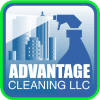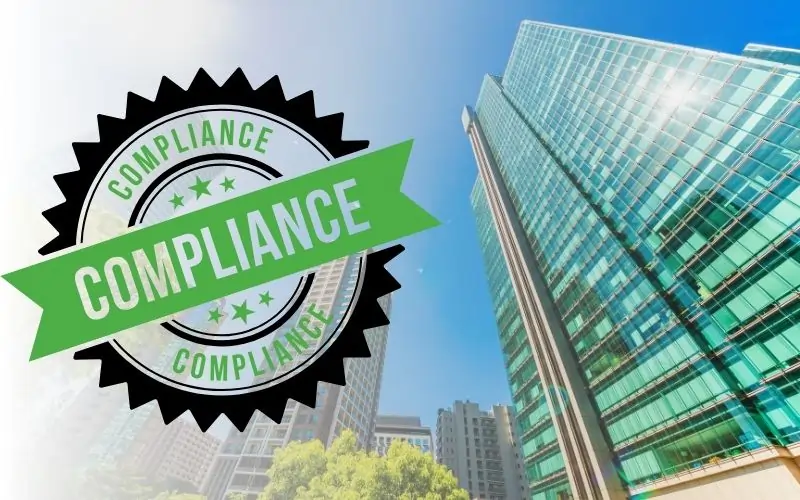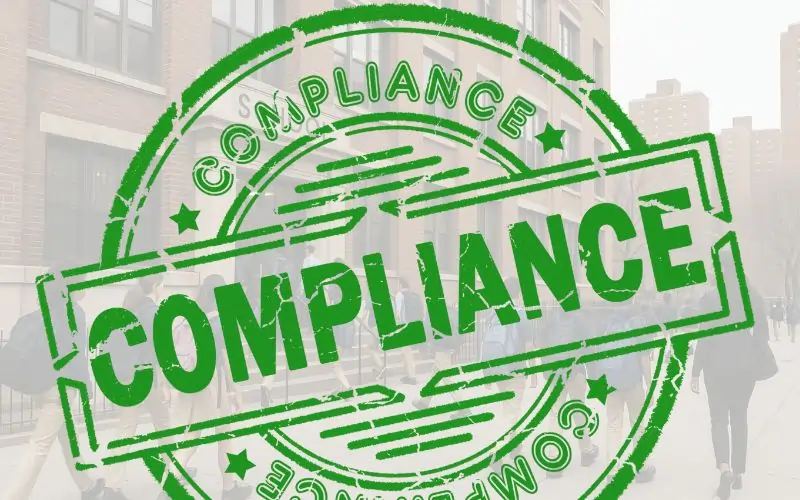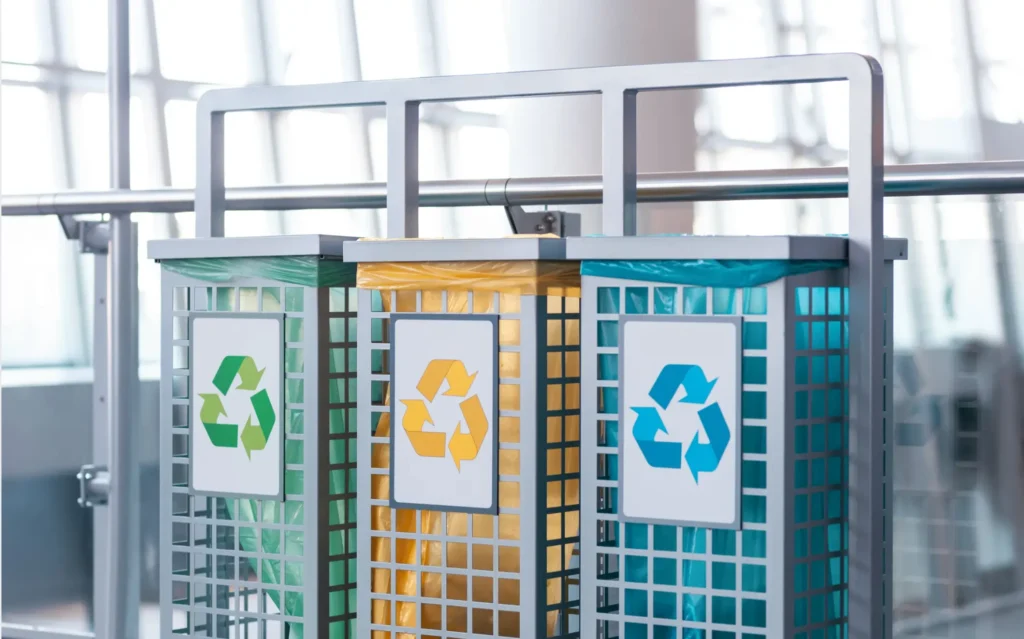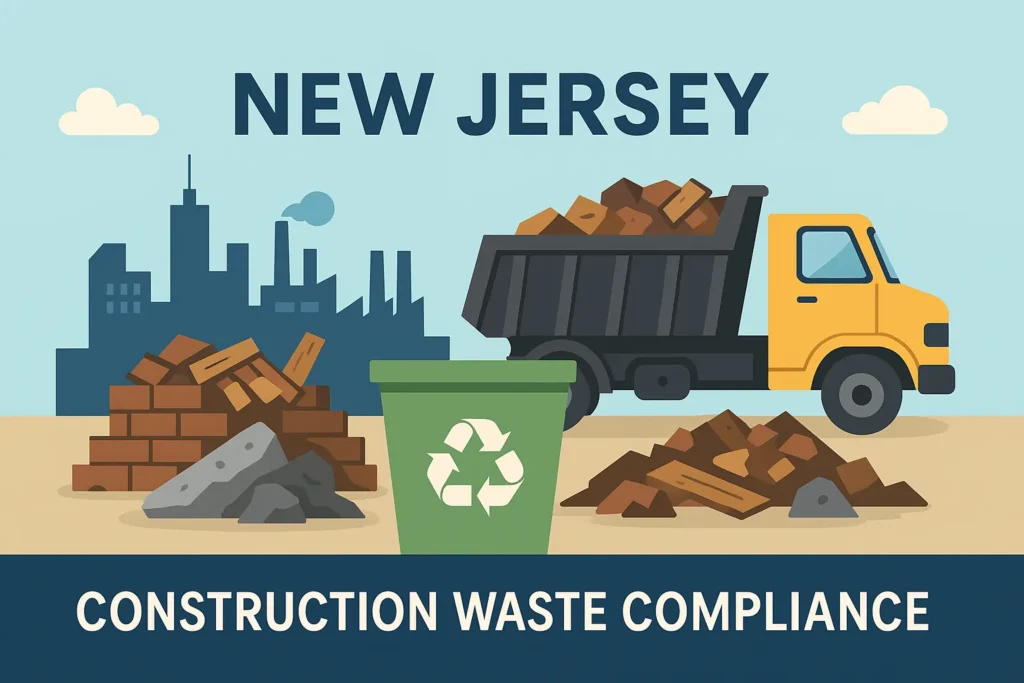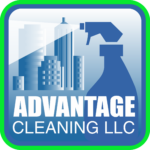Why Compliance Is Non-Negotiable
In New York City, green cleaning isn’t optional—it’s mandated by a combination of local, state, and federal regulations and noncompliance can result in fines, failed inspections, or operational shutdowns.
Traditional cleaning products often contain potentially harmful chemicals that can cause adverse health effects for building occupants, especially children and staff. By choosing green cleaning alternatives, facility managers can reduce exposure to harmful chemicals and support a safer, more sustainable environment. Compliant green cleaning delivers significant health benefits and environmental benefits, making it an essential part of responsible facility management.
Whether you manage a public school, office building, or industrial facility, compliance is your responsibility. This guide gives facility managers a practical roadmap to achieve and maintain full compliance in NYC.
Who Is Required to Follow Green Cleaning Laws in NYC and NYS?
Green cleaning laws in New York City and State apply to specific types of facilities, each with different legal requirements and enforcement agencies.
This guide is relevant for:
- Public and Charter Schools (K–12): Required to use OGS-approved products under NYS Education Law §409-i.
- Private Schools and Universities: Not covered by §409-i but must comply with OSHA and DSNY standards.
- Office Buildings and Commercial Facilities: Must follow OSHA rules and DSNY waste and chemical safety codes.
- Industrial and Manufacturing Sites: Required to meet OSHA chemical handling and hazard communication standards.
If you manage or contract services for any of the above, compliance is part of your legal responsibility in NYC.
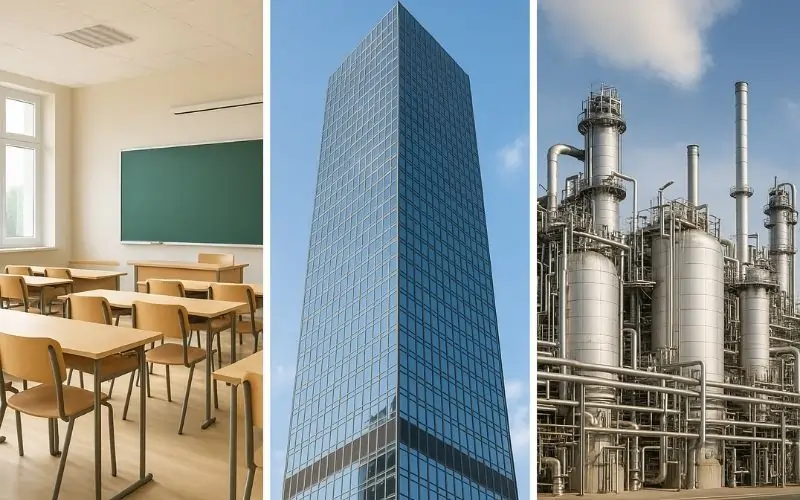
Who Sets the Environmental Regulations and Standards in NYC?
Several NYC, state, and federal agencies issue green cleaning mandates. Each plays a role in regulating approved products, safety practices, documentation, and inspection readiness.
- New York State Office of General Services (OGS) – Maintains the official list of approved green cleaning products under Education Law §409-i. See: OGS Green Cleaning Program
- New York State Education Department (NYSED) – Enforces the use of environmentally sensitive cleaning products in public and charter schools through Education Law §409-i and NYSED Facilities Planning guidelines. See: NYSED Green Cleaning Info
- NYC Department of Sanitation (DSNY) – Regulates proper storage and disposal of cleaning chemicals and solid waste per NYC Administrative Code §16-120 and §16-130. See: DSNY Rules and Regulations
- Occupational Safety and Health Administration (OSHA) – Requires compliance with the Hazard Communication Standard (29 CFR 1910.1200), Bloodborne Pathogens Standard (29 CFR 1910.1030), and Personal Protective Equipment (29 CFR 1910 Subpart I). These laws govern safe use, labeling, PPE, and employee training.
Certification standards for green cleaning products are established by third-party organizations such as Green Seal and the EPA’s Safer Choice program. These organizations, including the Environmental Protection Agency, set green standards and require products to meet rigorous standards through a detailed certification process. The certification process ensures that products comply with strict environmental, health, and safety criteria, building consumer trust and promoting sustainability. OSHA regulations also play a key role in ensuring compliance with safety and labeling requirements for green cleaning products.
The 6 Essential Compliance Logs Every Facility Needs
Keeping these six logs ensures you’re prepared for any audit and protects your team, occupants, and organization from compliance risks. Logs should also include information on chemical ingredients and any hazardous substances present in cleaning products, as well as documentation of their proper use according to label directions and professional guidelines.
- Daily Cleaning Logs – Track regular cleaning tasks, surfaces disinfected, and responsible staff.
- Product Use Logs – Document which green cleaning products are used, when, and where.
- SDS Files – Keep Safety Data Sheets for every product in use, up to date and easily accessible.
- Training Records – Prove your staff has been trained in safe and compliant cleaning practices.
- Incident Reports – Record any spills, exposure events, or accidents related to cleaning chemicals.
- Vendor Compliance Logs – Require vendors to provide service documentation, staff training info, and product details.
Maintaining these logs is essential for ongoing compliance with NYC and state regulations.
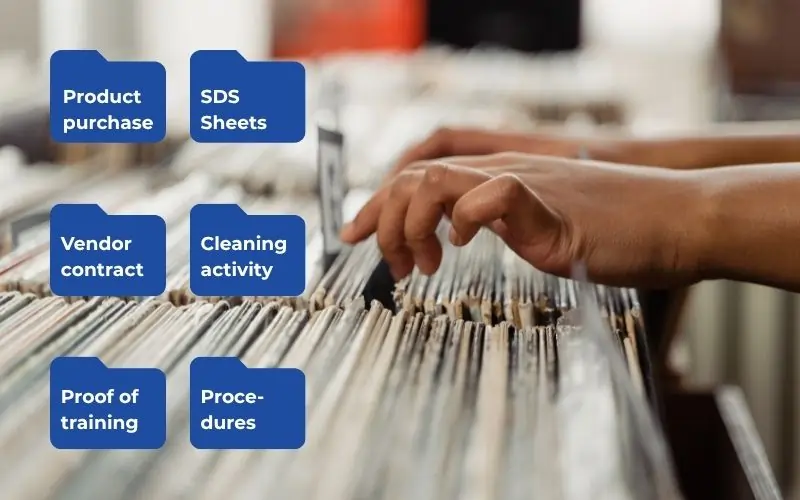
What Documentation Is Legally Required?
Compliance depends on consistent, well-organized records—these are the baseline requirements every NYC facility must maintain.
- Product purchase records and invoices
- Safety Data Sheets (SDS)
- Vendor agreements and certificates of insurance
- Logs of cleaning activity, incident response, and product use
- Proof of training and ongoing safety education for staff
- Documentation of green cleaning cleaning product ingredient transparency and waste disposal procedures, as required by DSNY and other agencies
Equipment Efficiency, Water Conservation, and Green Cleaning Products in Green Cleaning
In New York City, over two-thirds of greenhouse gas emissions come from buildings. Local Law 97 (LL97) is part of the 2019 Climate Mobilization Act, targets greenhouse gas emissions from buildings. It requires most buildings over 25,000 square feet to meet new emissions limits starting in 2024, that gradually reduce water and energy consumption.
While LL97 does not specifically mandate green cleaning practices, using energy-efficient cleaning equipment and minimizing water consumption contributes to a building’s overall environmental performance and emissions footprint. For facilities aiming to meet or exceed LL97 requirements, operational efficiency through smart cleaning strategies is a valuable supporting measure.
- Energy-Efficient Cleaning Equipment:
- Use vacuums and floor machines that are ENERGY STAR® rated or engineered for low energy use. Select vacuum cleaners and carpet cleaners with HEPA filters, as well as glass cleaners that meet eco friendly cleaning standards, to further support green cleaning initiatives. This reduces environmental impact and operating costs.
- Green Cleaning Solutions and Products:
- Choose green cleaning solutions and eco friendly cleaning products that utilize cleaning solutions made from renewable resources and are packaged in recyclable materials, supporting both sustainability and regulatory compliance.
- Water-Conserving Systems:
- Adopt microfiber mops, auto-dilution systems, and low-flow floor machines to cut water consumption and chemical runoff.
- Operational Impact:
- While not required by law for most facility types, these upgrades demonstrate environmental leadership and can contribute to certification goals (e.g., LEED). These choices also support environmental sustainability, environmental design goals, and sustainable practices that reduce waste.
- Who It Applies To:
- Recommended for all facility types—especially office buildings, large schools, and any facility aiming for environmental certification or future compliance under Local Law 97.
Implementing these green cleaning strategies can also result in significant cost savings over time through improved efficiency, reduced waste, and healthier indoor environments.
Common Compliance Pitfalls Affecting Compliance —and How to Avoid Them
Small oversights can lead to major problems. These are the most common compliance mistakes—and how to prevent them with simple best practices.
- Using unapproved products
- – Always cross-check with the OGS list
- Missing SDS sheets
- – Keep digital backups and regularly review your binder
- Inadequate training
- – Schedule quarterly refreshers
- Vendor gaps
- – Use contracts that require full documentation and compliance logs
- Failing to minimize chemical use and hazardous chemicals, or not properly documenting the use of toxic substances
- – Regularly review product inventories and ensure all chemical use is tracked and reported to comply with regulations.
- Not following proper use instructions for cleaning products
- – Always adhere to label directions and professional guidelines to ensure safety and compliance.
- Overlooking the need for fragrance free product labeling where required
- – Verify that products are accurately labeled as fragrance free when necessary to meet regulatory and certification standards.

Checklist: Green Cleaning Audit Preparation
Use this checklist to ensure you’re ready for any regulatory review—without scrambling for missing records.
- ✅ All cleaning logs up to date
- ✅ SDS files for each product
- ✅ Staff training files accessible
- ✅ Vendor service reports on file
- ✅ Incident and spill reports logged
How to I Vet Your Commercial Cleaning Vendors for Compliance
Your commercial cleaning vendor is a key compliance partner. These questions help you confirm whether they meet NYC regulatory standards.
Ask your commercial cleaning vendor:
- Do you use only OGS-approved green cleaning products?
- Can you demonstrate that your green products and eco friendly products are certified by third party organizations and meet rigorous certification standards?
- Can you explain your certification process for green products and eco friendly products?
- Can you provide product usage logs and SDS files?
- Are your employees trained in OSHA-compliant safety procedures?
- Do you assign a dedicated supervisor for inspection and documentation?
Conclusion: Compliance Isn’t Paperwork—It’s Protection
Proper green cleaning and compliance protects occupant health, human health, and environmental health, ensuring your people, your building, and your reputation are safeguarded. By following green cleaning standards, you also improve indoor air quality and overall air quality, which can lead to increased employee productivity. Compliance appeals to eco conscious consumers who value health and the environment, making your facility more attractive to this important market segment. With the right system and the right partner, staying compliant is not just achievable—it’s automatic.
For help building a fully compliant green cleaning program, contact Advantage Cleaning

A higher grade of Quality in Commercial Cleaning
Commercial Cleaning in CONNECTICUT
About Advantage Cleaning
Advantage Cleaning delivers commercial cleaning services and green cleaning services that includes compliance-as-a-service. Our operational and quality control system is built from the ground up to deliver consistent, high-quality results and total regulatory alignment for NYC facilities. At Advantage Cleaning, our compliance capabilities are embedded in the way we operate—not bolted on as an afterthought.
Here’s how we support NYC facility managers:
- We use only OGS-approved green cleaning products that meet all NYC and NYS regulations
- Our team is trained through a structured onboarding and refresher program aligned with OSHA and DSNY requirements
- All service activity is tracked through a KPI reporting system, giving you measurable, documented performance
- We maintain all SDS data sheet, usage logs, training certifications, and incident documentation—all organized and audit-ready
- Our quality assurance system includes scheduled inspections, supervisor check-ins, and reporting that anticipates compliance needs
The result is peace of mind for facility managers: every task is documented, every requirement is tracked, and every audit is met with confidence.
FAQ
Relevant articles
Compliance for NYC School Facilities – Guide for Facility Executives
This article is a practical blueprint for Charter School Chief Operating Officers responsible for outsourced…
NYC Office Building Sanitation & Disposal Rules – for Facility Managers
In New York City, commercial office buildings face strict Department of Sanitation (DSNY) and Business…
New Jersey Construction Waste Disposal: Compliance & What You Need to Know
Avoid costly penalties and stay compliant. Learn how to handle construction and demolition waste in…
